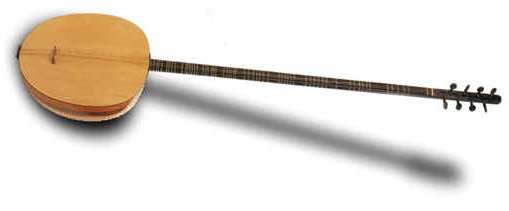


Modeling of the lutes
The tanbur, a Turkish long-necked lute, has a quasi-hemispheric body shell and a thin (1.5 to 2 mm) spruce soundboard. There is neither a sound hole nor braces, so that the soundboard is curved inwards by the static forces exerted by the two legs of the bridge. The long neck (73.5 to 84 cm) hosts 52-58 movable frets made of gut or nylon. The tanbur has seven strings, six of them are grouped in pairs.

The Turkish ud is a fretless short-necked lute. It has five courses tuned in unison, and a single bass string used as chantarelle. The two treble courses are made of nylon and the others of metal wound with fine silk or nylon thread.

Historically, both the lute and the Turkish ud are descendants of the Arabic instrument al'ud that has a wooden soundboard and a characteristic staved, wood-vaulted back design. The lute underwent continuous adaptation and evolution according to the requirements of European music. European lutes are now divided into three general categories; the medieval lute, the Renaissance lute, and the Baroque lute. The Renaissance lute has seven string groups, and it is played with fingers. All the strings except the first one are in pairs that are tuned in unison. Different sizes of the Renaissance lute form a consort (soprano, alto, tenor, and bass). The most common instrument for solo playing is the tenor lute, and we have studied the tenor lute. There are 8 frets on the neck on this lute, and several frets may be placed on the body, especially for treble courses. The soundboard has a single latticed sound hole.
The following table lists our lutes-related research in inverse chronological order. For some publications, the PDF-file and a companion web-page containing sound examples are provided. These can be found in the leftmost column.
| ||||||||||||
esittely | introduction | contact info | teaching | research | publications | current news | demonstrations | software | links | feedback | intranet | finder
http://www.acoustics.hut.fi/research/
Last modified: Wed Jan 18 15:05:11 EET 2006
< Feedback
>

